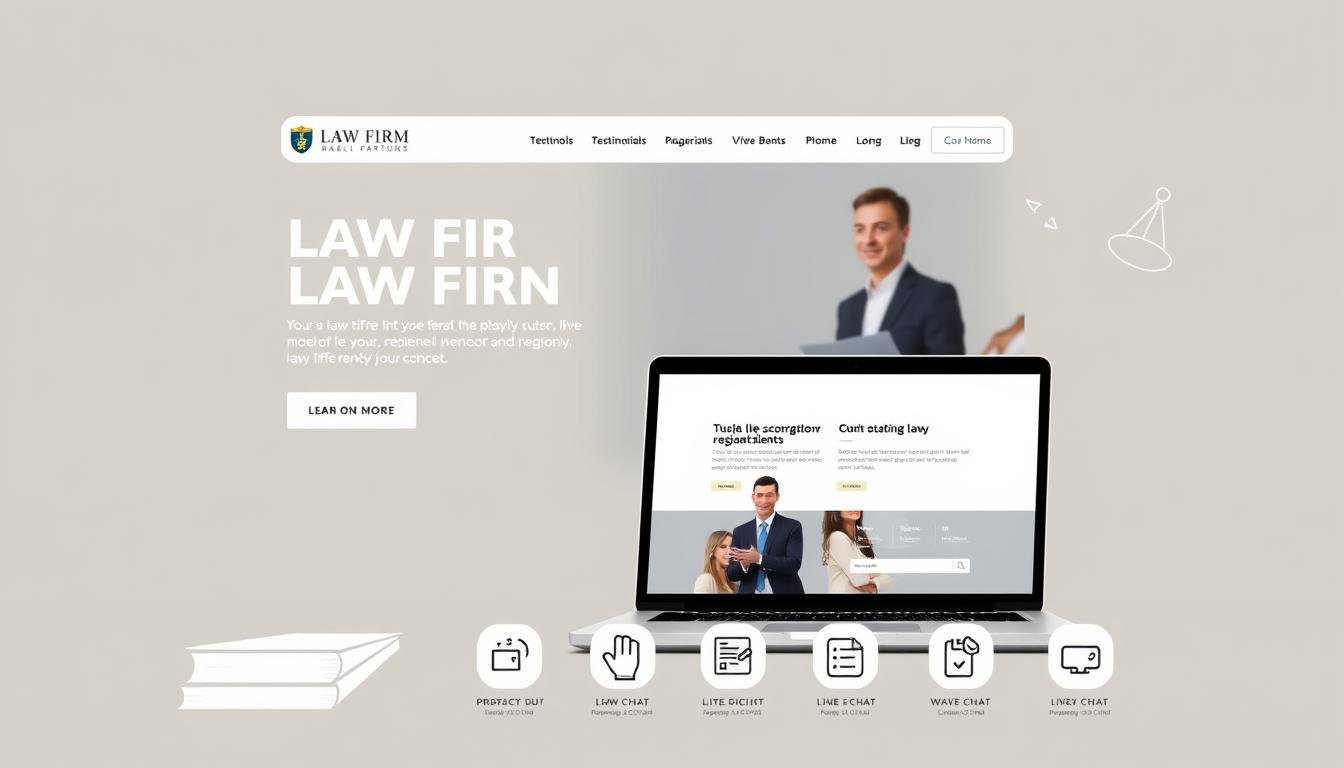Did you know 75% of users judge a company’s credibility by their website design? First impressions are key, and this is even more true in the legal field. Optimizing your website is not just about getting visitors. It’s about turning them into clients.
When we talk about boosting conversion rates, a well-designed site is essential. By using effective optimization techniques, we guide visitors to take actions like scheduling consultations or contacting your firm.
At our firm, we’ve seen how different strategies can really work. From great design to content that solves client problems, our aim is to increase conversions. We want to make sure you’re not just getting visitors, but also getting results that help your law practice grow.
The key to a top-performing website is using strategic techniques. These improve user experience and engagement, helping you get more conversions.
Key Takeaways
- Web design impacts 75% of user perceptions of credibility.
- Clear calls-to-action can boost conversion rates by up to 200%.
- 53% of mobile users will abandon sites that take longer than 3 seconds to load.
- Optimized local SEO can result in a 30% increase in local inquiries.
- Client testimonials can enhance conversion rates by 34%.
- Utilizing A/B testing could improve conversion rates by up to 49%.
- Websites with a well-structured mobile experience can see engagement rates soar by 85%.
Understand Your Audience’s Needs
Knowing what our audience needs is key to making law firm websites better. By studying our target groups well, we can make plans to get more leads. Understanding who our users are helps us tackle their problems, which boosts our website’s performance.
Research Your Target Demographics
Studying our target groups means looking into who they are and what they need. We need to know their age, job, and legal issues. This helps us create marketing that speaks to them, making them more likely to engage and convert.
Analyze Visitor Behavior
Watching how people use our websites gives us great insights. With analytics, we see which pages are most popular and how users move around. This info helps us make the site better and improve our conversion strategies.
Tailor Content to Address Pain Points
Our content should meet the needs of our visitors. For example, someone looking for personal injury help needs different info than a business law client. Making content that directly addresses these needs builds trust and boosts engagement, leading to more conversions.

Optimize Website Functionality
Improving a law firm website’s performance is key to better conversion rates. Focus on loading speed, mobile responsiveness, and navigation. Using the right optimization techniques can make the site more user-friendly. This leads to more engagement and more clients.
Improve Loading Speed
Page loading speed is very important for keeping users. Studies show that each extra second can cut conversions by 7%. Aim for a load time under three seconds. A site that loads in two seconds can see a 64% boost in conversion compared to one that takes eight seconds.
To make your site faster, compress images, reduce server response times, and use browser caching. These steps can significantly improve your site’s speed and conversion rates.
Ensure Mobile Responsiveness
More people use mobile devices, so having a mobile-friendly site is essential. A site that works well on mobile can see a 20-30% increase in conversions. A mobile-first design can improve user engagement by 37% on mobile, making it easier for clients to contact you.
For law firms, focusing on mobile responsiveness is critical. It ensures a smooth experience for mobile users, which can lead to more clients.
Simplify Navigation
A clear navigation system can cut bounce rates by 70%. This means more chances to get new clients. Keep drop-down menus simple, with 7-10 items at most. This makes it easier for users to find what they need quickly.
Good navigation is key to a successful website. It helps users find what they need fast, which increases the chance of conversion.

| Key Factor | Impact on Conversions |
|---|---|
| Loading Speed | 7% reduction in conversions for each additional second. |
| Mobile Optimization | 20-30% increase in conversion rates. |
| Simplified Navigation | Up to 70% reduction in user bounce rates. |
| Mobile-First Design | 37% improvement in user engagement on mobile devices. |
Implement Effective Call-to-Action Strategies
To boost conversion rates on law firm websites, we need to focus on call-to-action (CTA) strategies. Online users often have short attention spans, usually under 10 seconds. So, our CTAs must be clear, concise, and grab attention quickly.
Using phrases like “Get Your Free Consultation” or “Contact Our Legal Experts Now” can increase conversions by up to 50%. These phrases create a sense of urgency.
Use Clear and Compelling CTAs
Using simple, action-oriented language in our CTAs can improve performance by up to 30%. Adding a value proposition, like a free initial consultation, can increase engagement by about 20%.
Design elements like contrasting colors and bold text make CTAs stand out. This leads to higher interaction rates and better user engagement.
Strategically Place CTAs Throughout the Site
Placing CTAs strategically is key to increasing visibility and interaction. CTAs above the fold can get over 70% of user engagement. This shows the importance of placing them on all pages, including practice area pages.
Offering different ways to communicate, like phone calls, emails, or consultation bookings, makes the experience more inclusive. This can significantly boost conversion rates.
A/B Test Different CTAs for Effectiveness
To improve our conversion strategies, A/B testing different CTAs is essential. Even small changes in wording, color, or design can make a big difference. This can increase conversion rates by over 25%.
Using creative phrasing, like “talk to a lawyer” instead of “consultation,” can make our CTAs more appealing. This encourages users to take action right away.






